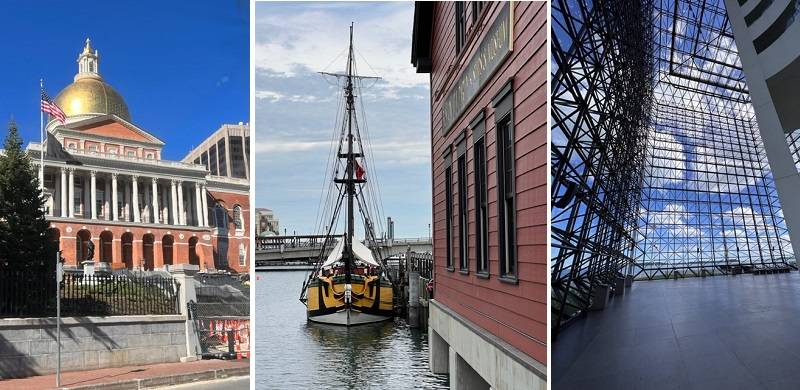
Boston is in many ways the epicentre of New England. I had visited it numerous times on business since the early 1980s. In those visits, I focused on work and attended conferences or visited clients. Once, I spoke at Harvard on Kashmir and once at MIT on energy issues, but there was no time to tour the campuses.
On a recent visit, I discovered a Boston that I had not seen before. The city had played a vital role in the US war of independence. In many ways, Boston was where it all began. But somehow that part of American history had never really intrigued me.
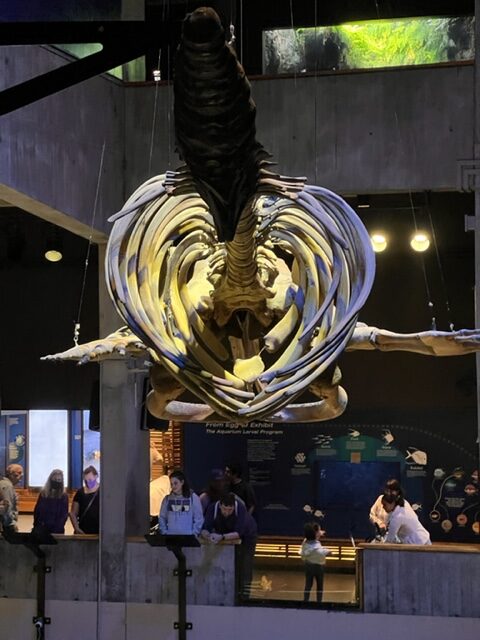 I had been to colonial Williamsburg. Nearby, in Yorktown, General George Washington had defeated British General Charles Cornwallis. I was not impressed with the size of the Governor’s Mansion. It was dwarfed by several buildings that the British had built in the Subcontinent. I had toured Britain several times and seen their grand castles and museums. Boston probably would have nothing to match.
I had been to colonial Williamsburg. Nearby, in Yorktown, General George Washington had defeated British General Charles Cornwallis. I was not impressed with the size of the Governor’s Mansion. It was dwarfed by several buildings that the British had built in the Subcontinent. I had toured Britain several times and seen their grand castles and museums. Boston probably would have nothing to match.
So, I went in with low expectations. After a long flight from San Francisco, we checked into a hotel on the waterfront. We had picked the location for the views it would provide of the city skyline and the sea. We assumed that it would be easy to take the harbour cruise as well as city tours from there.
When we woke up the next morning, it was raining and windy. This was not a day for a harbour cruise or for taking any tours. Instead, we went to the Museum of Fine Arts. It turned out to be incredible.
It was so huge that we could not possibly see all the sections even if we spent days there. We focused on the section dealing with ancient Egypt. On display were some of the best collections from the Pharaonic Age, easily on par with those in Berlin, Cairo, and London.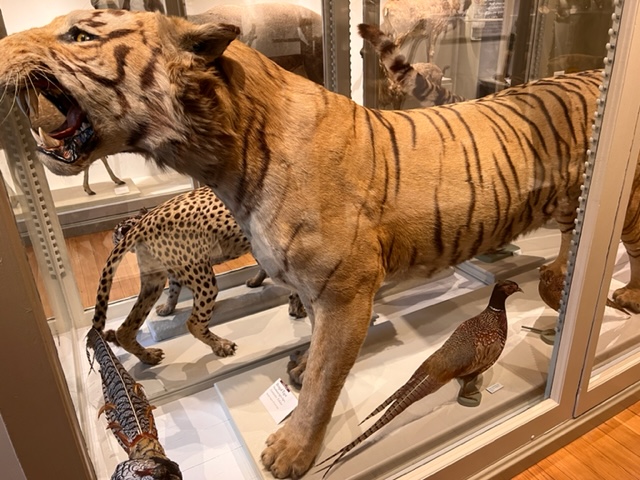
We returned to the hotel and discovered that the New England Aquarium was just a couple of blocks away. We put on our rain gear and walked toward it. The penguins were being fed! Several other marine species were moving around in large glass cages. But what fascinated us the most was the skeleton of a large whale. It was about two dozen feet long. They had hung it in the air.
For dinner, we walked to Legal Sea Foods. I ordered a dish with a Mexican touch. It was very tasty.
It did not rain the next day, but it was really windy and cold. We went to a shopping mall and bought some woolens. By the time we were done shopping, the weather had improved. So, we decided to walk around town.
A colonial era building caught our attention. We stepped in and got some information about the historical tours that it offered. By now, we were getting hungry and asked the agent where we could find simple Italian food. She recommended Regina Pizza.
As we began to walk toward the pizza, we discovered the Freedom Trail. It took us to the Old North Church whose front featured a statue of Paul Revere on a horse. He was a torchbearer of the American revolution, and his house was located nearby in the oldest part of town.
We also discovered an open-air marketplace. An Egyptian man was selling baseball hats and other souvenirs at a kiosk. We chatted with him about our two visits there. He goes to Cairo twice a year and was quite critical of the political situation back home.
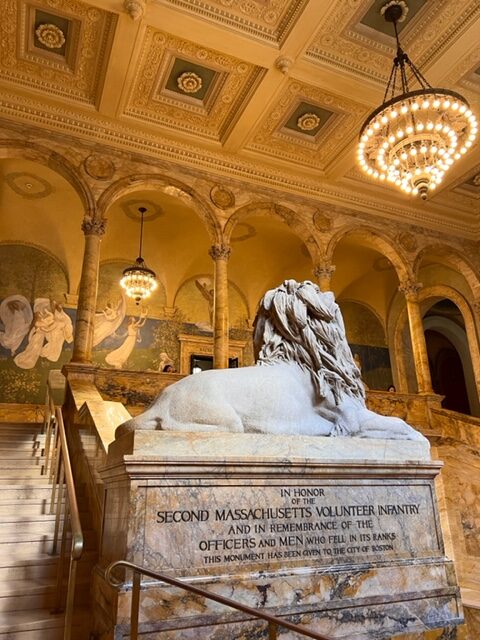 Finally, we were in little Italy. We could well have been in Rome except that all the signs were in English. We were unable to find the pizza place until a fireman directed us toward it. The pizza was authentic.
Finally, we were in little Italy. We could well have been in Rome except that all the signs were in English. We were unable to find the pizza place until a fireman directed us toward it. The pizza was authentic.
The weather improved the next day. We did the Harbor Cruise and saw an old fort, a sailing ship from the revolutionary period, and a WWII warship.
Later, we did the Old Town Trolley tour. It went past some of the historical sites we had missed and learned some more revolutionary war history. It also went past the grand State House with a golden dome.
At one stop, three women boarded the trolley and proudly announced in British English that they were from “Old England.” Their arrival evoked some spontaneous commentary in the trolley. Later, in a walk e discovered the Holocaust Museum. It was in the open air and featured glass walls, where the names of the victims had been etched in. It was very sobering to read some of the inscriptions which accompanied the names.
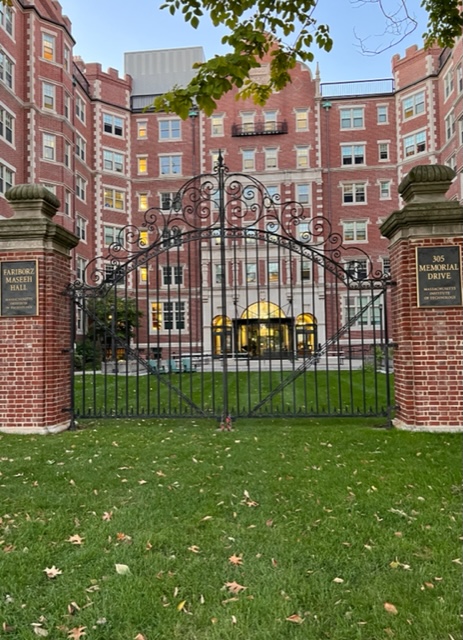 The next day, we went to MIT. It is located in Cambridge across the Charles River. The iconic domed building on campus brought back memories of 1975, when I had visited a couple of friends from Karachi University who were studying there.
The next day, we went to MIT. It is located in Cambridge across the Charles River. The iconic domed building on campus brought back memories of 1975, when I had visited a couple of friends from Karachi University who were studying there.
On this trip, we walked around the campus. One of the buildings was a wind tunnel which Boeing had donated. Some buildings had the names of historical figures such as Aristotle and Newton inscribed on them. As we drove back to the waterfront along the river, night had fallen. The lights of Boston were reflecting in the water, giving it a magical appearance.
The next day, we visited the JFK Presidential Library at the other end of Boston. It provided a glimpse into his early life, his presidential campaign, and his speeches as the 35th President. In one hallway, there were photographs of him with visiting heads of state, including President Ayub and Prime Minister Nehru. There was no exhibit about his assassination, which I was hoping to see.
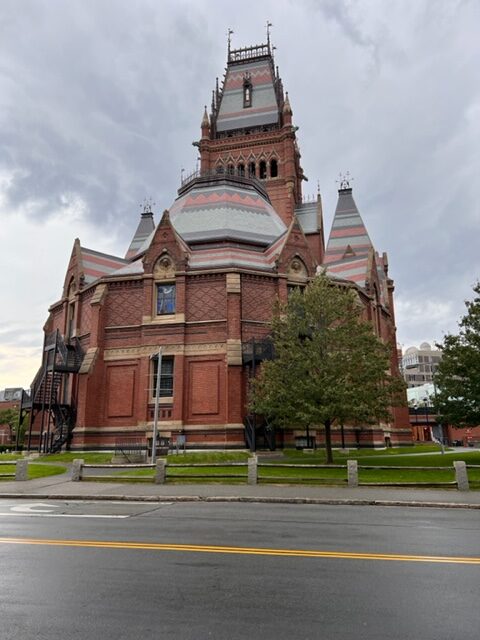
Then we went to the Harvard campus, which is located not that far away from MIT. The architecture was charming by American standards but, of course, no match for either Oxford or Cambridge. It had four museums of science and culture. We visited the Peabody Museum of Archaeology and Ethnology. It was awesome. An adjacent section focused on climate change and another on dinosaurs.
On our last day, we visited the Boston Public Library. The architecture was colonial. Inside, the ceilings and the stairwells were studded with amazing artwork. Classical statues decorated the stairwells and hallways. Just across the street was the beautiful Trinity Church. The iconic John Hancock tower loomed just a few blocks away.
As the Boeing 737-Max flying us home lifted up its landing gear, we got a last glimpse of the Boston skyline. The trip had stimulated not just our minds but also our senses.
On a recent visit, I discovered a Boston that I had not seen before. The city had played a vital role in the US war of independence. In many ways, Boston was where it all began. But somehow that part of American history had never really intrigued me.
 I had been to colonial Williamsburg. Nearby, in Yorktown, General George Washington had defeated British General Charles Cornwallis. I was not impressed with the size of the Governor’s Mansion. It was dwarfed by several buildings that the British had built in the Subcontinent. I had toured Britain several times and seen their grand castles and museums. Boston probably would have nothing to match.
I had been to colonial Williamsburg. Nearby, in Yorktown, General George Washington had defeated British General Charles Cornwallis. I was not impressed with the size of the Governor’s Mansion. It was dwarfed by several buildings that the British had built in the Subcontinent. I had toured Britain several times and seen their grand castles and museums. Boston probably would have nothing to match.So, I went in with low expectations. After a long flight from San Francisco, we checked into a hotel on the waterfront. We had picked the location for the views it would provide of the city skyline and the sea. We assumed that it would be easy to take the harbour cruise as well as city tours from there.
When we woke up the next morning, it was raining and windy. This was not a day for a harbour cruise or for taking any tours. Instead, we went to the Museum of Fine Arts. It turned out to be incredible.
It was so huge that we could not possibly see all the sections even if we spent days there. We focused on the section dealing with ancient Egypt. On display were some of the best collections from the Pharaonic Age, easily on par with those in Berlin, Cairo, and London.

We returned to the hotel and discovered that the New England Aquarium was just a couple of blocks away. We put on our rain gear and walked toward it. The penguins were being fed! Several other marine species were moving around in large glass cages. But what fascinated us the most was the skeleton of a large whale. It was about two dozen feet long. They had hung it in the air.

For dinner, we walked to Legal Sea Foods. I ordered a dish with a Mexican touch. It was very tasty.
It did not rain the next day, but it was really windy and cold. We went to a shopping mall and bought some woolens. By the time we were done shopping, the weather had improved. So, we decided to walk around town.
A colonial era building caught our attention. We stepped in and got some information about the historical tours that it offered. By now, we were getting hungry and asked the agent where we could find simple Italian food. She recommended Regina Pizza.
As we began to walk toward the pizza, we discovered the Freedom Trail. It took us to the Old North Church whose front featured a statue of Paul Revere on a horse. He was a torchbearer of the American revolution, and his house was located nearby in the oldest part of town.
We also discovered an open-air marketplace. An Egyptian man was selling baseball hats and other souvenirs at a kiosk. We chatted with him about our two visits there. He goes to Cairo twice a year and was quite critical of the political situation back home.
 Finally, we were in little Italy. We could well have been in Rome except that all the signs were in English. We were unable to find the pizza place until a fireman directed us toward it. The pizza was authentic.
Finally, we were in little Italy. We could well have been in Rome except that all the signs were in English. We were unable to find the pizza place until a fireman directed us toward it. The pizza was authentic.The weather improved the next day. We did the Harbor Cruise and saw an old fort, a sailing ship from the revolutionary period, and a WWII warship.
Later, we did the Old Town Trolley tour. It went past some of the historical sites we had missed and learned some more revolutionary war history. It also went past the grand State House with a golden dome.
At one stop, three women boarded the trolley and proudly announced in British English that they were from “Old England.” Their arrival evoked some spontaneous commentary in the trolley. Later, in a walk e discovered the Holocaust Museum. It was in the open air and featured glass walls, where the names of the victims had been etched in. It was very sobering to read some of the inscriptions which accompanied the names.
 The next day, we went to MIT. It is located in Cambridge across the Charles River. The iconic domed building on campus brought back memories of 1975, when I had visited a couple of friends from Karachi University who were studying there.
The next day, we went to MIT. It is located in Cambridge across the Charles River. The iconic domed building on campus brought back memories of 1975, when I had visited a couple of friends from Karachi University who were studying there.On this trip, we walked around the campus. One of the buildings was a wind tunnel which Boeing had donated. Some buildings had the names of historical figures such as Aristotle and Newton inscribed on them. As we drove back to the waterfront along the river, night had fallen. The lights of Boston were reflecting in the water, giving it a magical appearance.
The next day, we visited the JFK Presidential Library at the other end of Boston. It provided a glimpse into his early life, his presidential campaign, and his speeches as the 35th President. In one hallway, there were photographs of him with visiting heads of state, including President Ayub and Prime Minister Nehru. There was no exhibit about his assassination, which I was hoping to see.

Then we went to the Harvard campus, which is located not that far away from MIT. The architecture was charming by American standards but, of course, no match for either Oxford or Cambridge. It had four museums of science and culture. We visited the Peabody Museum of Archaeology and Ethnology. It was awesome. An adjacent section focused on climate change and another on dinosaurs.
On our last day, we visited the Boston Public Library. The architecture was colonial. Inside, the ceilings and the stairwells were studded with amazing artwork. Classical statues decorated the stairwells and hallways. Just across the street was the beautiful Trinity Church. The iconic John Hancock tower loomed just a few blocks away.
As the Boeing 737-Max flying us home lifted up its landing gear, we got a last glimpse of the Boston skyline. The trip had stimulated not just our minds but also our senses.

